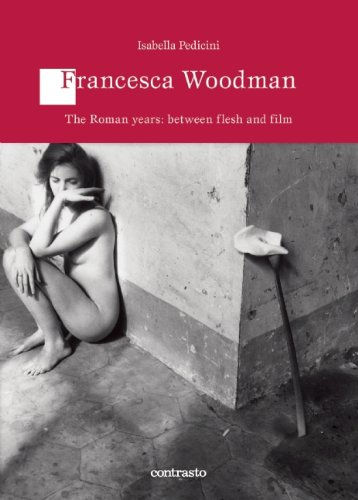Francesca Woodman: The Roman Years
- hcbontoft
- Mar 3, 2018
- 3 min read

Pedicini, I. (2012). Francesca Woodman. Roma: Contrasto.
Woodman's work has an uncanny element to it that has drawn me time and time again to her work. Her images create an experience, unique to each viewer that see's them. There is a certain aura to the hand-developed medium format images which to me has an astonishing ability to become intimate to nearly any viewer that is lucky enough to see an image in person.
Her images speak of isolation, self and time which is what I want to portray in my work. I want to capture the melancholic beauty of sadness in everyday life; perhaps a reflection of self.
“One of the fascinating aspects of Francesca Woodman’s imagery is its mystery. Any viewer of a picture brings herself or himself to it, but Woodman’s imagery seems particularly adept at inviting multiple readings” Pg. 8
“Woodman once stated, with perhaps a hint of irony, perhaps a bit of pragmatism, that she photographed herself because “it’s a matter of convenience, I photograph myself because I’m always available.” Pg. 10
“However, a much more likely reason for photographing yourself – a philosophical, aesthetic, psychological reason – is because you want to say something about yourself. On a less exalted level, tourists photographing themselves in front of the Trevi Fountains, or families recording life’s rites of passage, are essentially doing the same thing – making self-portraits. And for a basically analogous reason. To paraphrase Descartes “I photograph, therefore I am.” Pg. 10
“This is the “time” element, her use of timing controls of photography, specifically long exposures, to create blurred effects in her pictures, which rendered the persona, or personas she was depicting both Tran-substantial and in substantial.” Pg. 13
“There are many reasons why a photographer making self-portraits would want to blur his or her identity. For example, there is the idea of the doppelganger, the double, taken from European romanticism, where a hidden, or suppressed aspect of the self is explored in terms of another person, existing outside oneself – a parallel self, a twin or an imaginary best friend… European fairy tales are full of this kind of theme – prefiguring the notion of the ID and the ego or the split personality long before Freud.” Pg. 14
“One can also argue that the use of time exposures say something about temporality, both in photography and what Woodman depicts.” Pg. 14
“The photograph is a deeply melancholic object. The photograph – the torn skin of reality, the crystallised image, the freezing of time – stops life in an instant. By affirming life’s materiality, it conserves the inevitable component of death latent in every image.” Pg. 30
“I want my photographs to condense experience into small images that contain all the mystery of fear or whatever it is that’s latent in the eyes of the viewer, and bring it out as though it were on her own experience.” – Francesca Woodman” Pg. 42
“All photography is, in a sense, object trouvé, even when it’s premediated and not reliant on chance, it still relies on the same moments of choosing-placing-signing that determine the Duchamp ready-made” Pg. 44
"Woodman’s photography explored a number of parallel artistic endeavours, the emancipation of the female figure in art, the body as language and the poetry found in everyday life.” Pg. 58
“… her photography captures the instant in which her everyday experience coalesces with her artistic impetus – her penetrating perception of reality and her analysis of her own identity through the relationship between space and the body.” Pg. 72
“There are three visual strategies of camouflage: invisibility, disguise, and imitation.
Borrowing this concept from nature, semiotics transposes the uncertain boundaries of the biological matrix into linguistic signs, and then to artistic signs.” Pg. 93








Comments